Curriculum, Lesson Plans and Activities
 Ocean Acidification Activities Ocean Acidification Activities
Our carbon emissions are making the ocean more acidic, which threatens life in the global ocean. Use these resources to educate yourself and others to take action. Or watch science lectures on the topic of OA and download education resources for the high school classroom.
 Voices of the Bay
Voices of the Bay
Voices of the Bay introduces students to Monterey Bay's rich fishing heritage as well as its relevance and value today. Each of the three instructional modules that make up the Voices of the Bay curriculum may be implemented as stand-alone activities or sequenced, in the order suggested below, as a more comprehensive course of study.
 Winged Ambassadors
Winged Ambassadors
Albatrosses-charismatic and threatened seabird-are ambassadors for a clean ocean. They traverse vast oceanic regions searching for floating food. Along their journeys, they ingest plastic trash and are hooked in fisheries. These five lessons use inquiry-based science instruction, aligned to standards for grades 6 - 8 with extensions for grades 9 - 12.
 Oceans for Life Lesson Plans and Videos Oceans for Life Lesson Plans and Videos
The Oceans for Life lesson plans and complementary short videos developed in partnership with National Geographic Society highlight cutting edge research, environmental issues facing the ocean today and our National Marine Sanctuaries. Appropriate for grades 6-8.
 Science NetLinks: Marine Sanctuaries
Science NetLinks: Marine Sanctuaries
In this lesson, students will learn about the national marine sanctuaries. They include breeding and feeding grounds of whales, sea lions, sharks, and sea turtles; significant coral reefs and kelp forest habitats; and the remains of the USS Monitor, a Civil War ironclad sunk off the coast of North Carolina. By learning about the biodiversity, ecological integrity, and cultural legacy of these marine sanctuaries, students can place into context what they are learning about the interdependence of living things on our planet.
 Coastal Ecosystem Curriculum
Coastal Ecosystem Curriculum
The Farallones Marine Sanctuary Association has developed a seven-unit Coastal Ecosystem Curriculum for grades 9-12 that focuses on the open water and intertidal habitats in the Gulf of the Farallones National Marine Sanctuary. Teachers and educators who attend our teacher workshops receive this curriculum and all associated classroom activities.
 Science NetLinks: Marine Reserves
Science NetLinks: Marine Reserves
Ever declining numbers of marine plants and fish are sending ecologists scrambling for better ways to protect the ocean. Some have suggested that marine reserves are the answer. This Science Update looks at the unexpected impact marine reserves have on their surroundings.
 Threats to Ocean Life: Can Marine Sanctuaries Help?
Threats to Ocean Life: Can Marine Sanctuaries Help?
This lesson provides an opportunity for students to learn about environmental problems in the ocean and how marine sanctuaries can help protect ocean habitats. Students will use National Geographic's Wild World Global 200 feature to learn about marine eco-regions and the environmental problems they are facing. They will read about the National Marine Sanctuary System. Students will conclude by writing proposals to establish new marine sanctuaries.
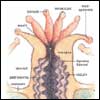 Coral Cores: Ocean Timelines (pdf, 1.7MB) Coral Cores: Ocean Timelines (pdf, 1.7MB)
An activity describing the natural and scientific processes involved in paleoclimate research using coral cores obtained from the Flower Garden Banks.
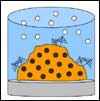 Coral Spawning Globe (pdf, 144 KB) Coral Spawning Globe (pdf, 144 KB)
Create a model of the mass coral spawning that occurs annually, seven to ten nights after the full moon in August and/or September.
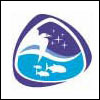 Navigating Change Curriculum Navigating Change Curriculum
A Teacher's Guide to Navigating Change: An educational voyage to motivate, encourage, and challenge us to take care of our land and sea. The Navigating Change Teacher's Guide is a 4th-5th grade standards aligned curriculum focused on the Northwestern Hawaiian Islands.
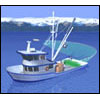 Game of Life (pdf, 128K) Game of Life (pdf, 128K)
What does overfishing mean? What are the effects of overfishing on fish stocks? This grade 6-8, standards-based lesson plan tackles these difficult questions.
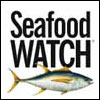 Empty Ocean (pdf, 132K) Empty Ocean (pdf, 132K)
How does the human population affect the population of marine species? What can citizens do to sustain seafood populations? Have your students learn more by conducting this grades 6-8, standards-based lesson plan.
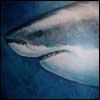 Sharkmobile Sharkmobile
Bring this exciting program on shark biology to your school. The Sharkmobile is a free one-hour classroom program that explores the biology of sharks from around the world. Appropriate for grades 4-6 in the San Francisco Bay area.
 Stetson Bank Monitoring Activity Stetson Bank Monitoring Activity
This activity from the Flower Garden Banks National Marine Sanctuary is designed to give students a sense of the real-life science being used to conduct long-term monitoring of habitats in the sanctuary.
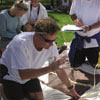 Mock Shipwreck Lesson Plan Mock Shipwreck Lesson Plan
This maritime heritage-based lesson plan generates excitement among students and peaks their curiosity about the people who lived and worked along our coasts and the events that shaped who we are today.
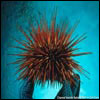 National Marine Sanctuary Lesson Plan National Marine Sanctuary Lesson Plan
Explore our national marine sanctuaries and learn about habitats and human impacts with this internet research activity.
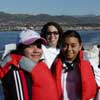 From Shore to Sea: Exploring From Shore to Sea: Exploring
California’s Channel Islands
Explore California’s Channel Islands with a multi-disciplinary curriculum and digital labs
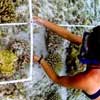 Rapid Ecological Assessment Lesson Rapid Ecological Assessment Lesson
Students will conduct an ecological assessment of a small area on school property and apply findings to the greater area.
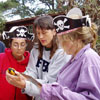 Using GIS to Experience Sanctuaries Using GIS to Experience Sanctuaries
Channel Islands, Florida Keys, Gray’s Reef and Stellwagen Bank national marine sanctuaries have joined forces to develop three lesson plans that combine geographic information systems and national marine sanctuaries to teach students about the oceans.
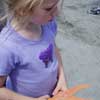 The Land-Sea Connection The Land-Sea Connection
This curriculum will increase your students understanding of science and geography.
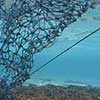 Marine Debris Lesson Plan Marine Debris Lesson Plan
Students will perform experiments to examine if debris will float, or blow in the wind. The effects of these characteristics on the marine debris are then discussed.
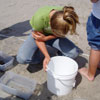 Become an Ocean Explorer! Become an Ocean Explorer!
Through a National Science Foundation grant, the Channel Islands National Marine Sanctuary presents Ocean Explorers. Ocean Explorers empowers California teachers to involve their students in original research on issues of interest. The program also helps teachers create ocean-themed, inquiry-based learning activities that meet federal, state and local standards.
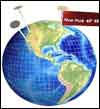 Geodesy Discovery Kit Geodesy Discovery Kit
Geodesy is the science of measuring and monitoring the size and shape of the Earth. Learn more about geodesy through this educational discovery kit.
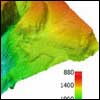 Seamounts in Monterey Bay Seamounts in Monterey Bay
Learn about these mountains under the sea; explore images of seamount critters and tie it all together with educational lesson plans.
|





